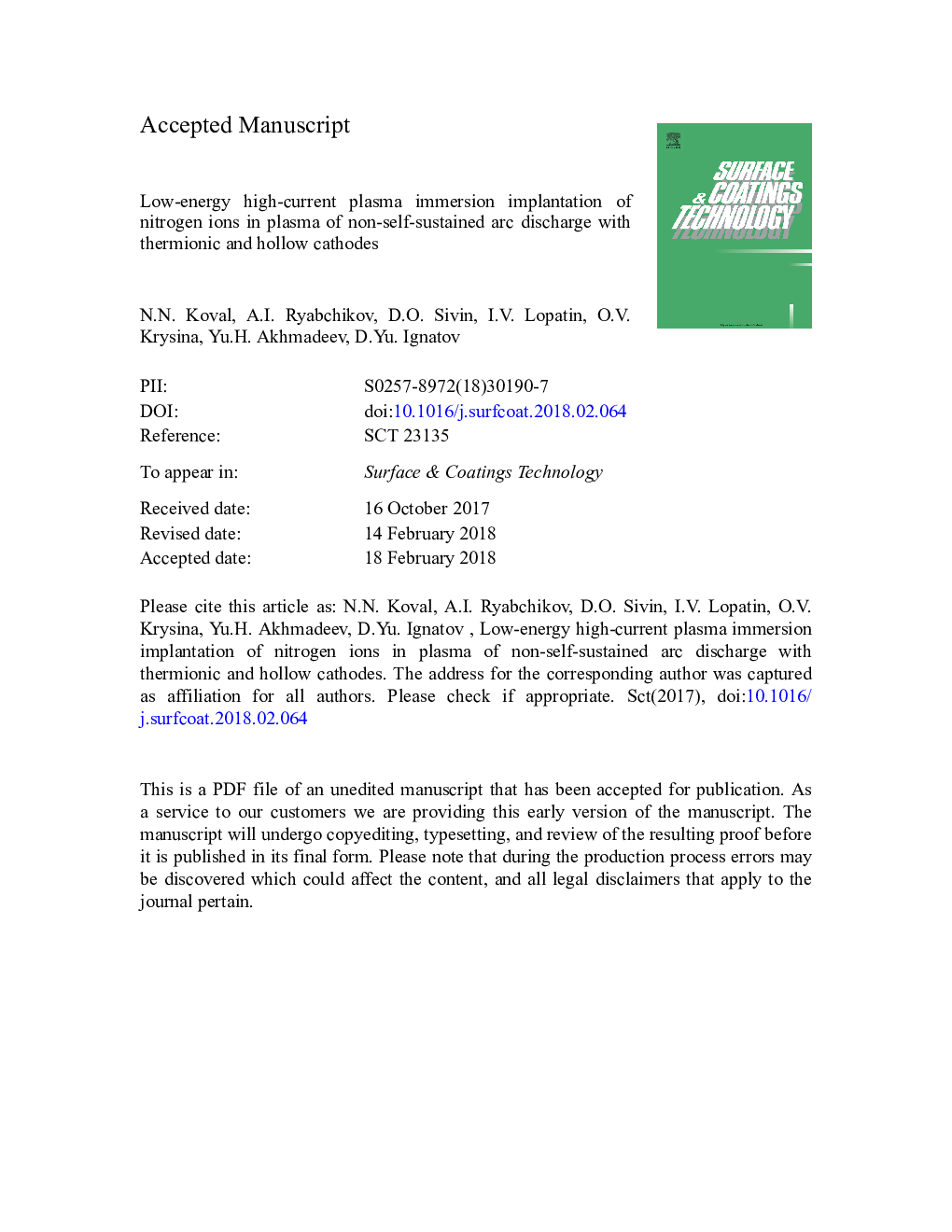| Article ID | Journal | Published Year | Pages | File Type |
|---|---|---|---|---|
| 8024091 | Surface and Coatings Technology | 2018 | 29 Pages |
Abstract
This paper presents the results of low-energy high-current implantation of nitrogen ions into AISI 5140 steel. The plasma was generated using a plasma source based on non-self-sustained arc discharge, using thermionic and hollow cathodes. The influence of the temperature of the specimens and irradiation dose on the characteristics of the ion-modified layer was studied. The temperature of the specimens was controlled within the range of (450-650) °C by changing the duty factor of the bias pulse and the average ion current density. The microhardness of the steel after 1-hour of low-energy high-current implantation of nitrogen ions increased almost 2-fold (up to 7100â¯MPa), and a modified layer with a thickness up to 200â¯Î¼m was formed. The wear resistance increased 7.5-fold. The main factor determining the efficiency of nitrogen dopant penetration was the temperature of the specimen. The parameters of the ion treatment influence the shape of the hardness distribution profile and the efficiency of ion cleaning of the surface.
Related Topics
Physical Sciences and Engineering
Materials Science
Nanotechnology
Authors
N.N. Koval, A.I. Ryabchikov, D.O. Sivin, I.V. Lopatin, O.V. Krysina, Yu.H. Akhmadeev, D.Yu. Ignatov,
